Discover
BROKEN CHAIR
ABOUT
Broken Chair : symbol for armed violence victims
Broken Chair embodies the desperate but proud cry of the civilian populations harmed by all forms of armed violence. It also symbolizes the obligation of States to protect and help the victims. Its presence on the Place des Nations allows each of us to develop a personal reflection on our responsibility to refuse the unacceptable, and to act!
Created : 1997
Size and weight : 12 meters and 5.5 tons
Material : Douglas Wood
Owner : Handicap International, Humanity & Inclusion
Project : Paul Vermeulen, co-founder of Handicap International Switzerland
Artist : Daniel Berset
Carpenter : Louis Genève
Engineer : Thomas Büchi
History
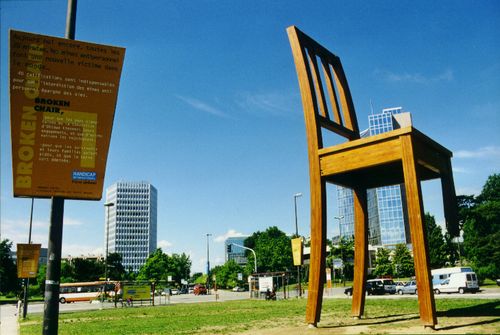 1997
1997
18 August - Broken Chair comes to Place des Nations
This giant chair was born out of Handicap International’s desire to rally states and public opinion to put an end to the humanitarian crisis caused by antipersonnel mines.
18 August - Broken Chair comes to Place des Nations
This giant chair was born out of Handicap International’s desire to rally states and public opinion to put an end to the humanitarian crisis caused by antipersonnel mines.
"The idea was to attract the public's attention by creating a powerful message that cannot be rejected by Geneva authorities. To speak of such a sensitive subject, one has to go through a symbol." - Paul Vermeulen, co-founder of Handicap International Switzerland.
Originally, Broken Chair was to be installed for a few months and taken down in December 1997 once the Ottawa Treaty prohibiting the acquisition, production, stockpiling and use of antipersonnel mines was signed. Yet thanks to its popularity, the sculpture has remained on Place des Nations.
An uncertain future
The renovation of Place des Nations again threatened Broken Chair’s presence. "While for the architects, the artwork integrated perfectly their visual concept
The renovation of Place des Nations again threatened Broken Chair’s presence. "While for the architects, the artwork integrated perfectly their visual concept of the renovation of the square, pressure for its removal came from certain international spheres." - Paul Vermeulen.
On the initiative of Handicap International, a support movement was organised to bring back the artwork, which had rapidly gained international renown.
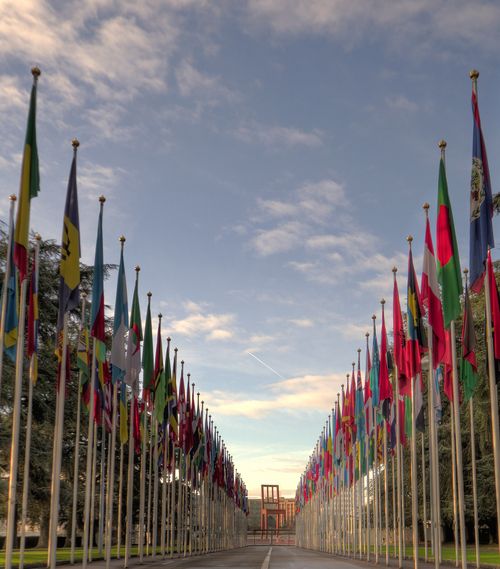 2007
2007
February 26 - Broken Chair returns
Beyond the debate about its future, Broken Chair returned to its original location thanks to a groundswell of popular demand.
Beyond the debate about its future, Broken Chair returned to its original location thanks to a groundswell of popular demand.
"You don't get rid of symbols so easily. Its return had provoked heated debate at the heart of international organizations. But a wide support has made Daniel Berset's work an icon in the fight against mines and cluster bombs, as well as a place of expression of all injustices." - the daily newspaper Le Temps.
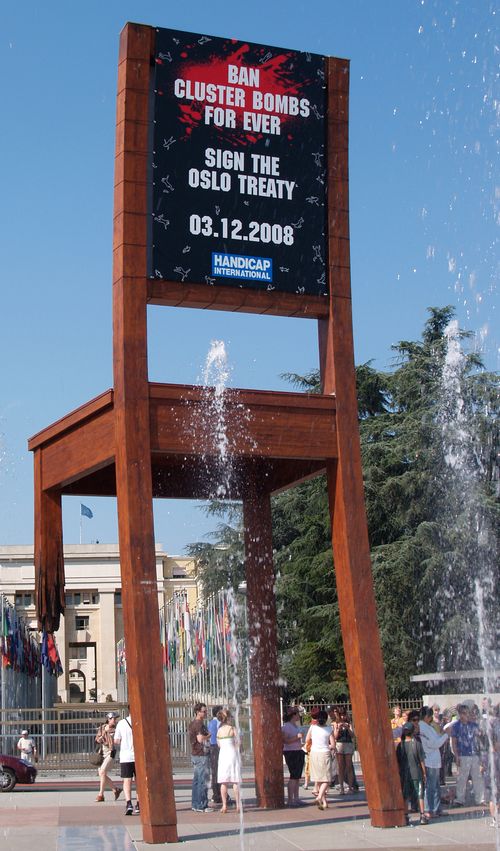 2008
2008
Broken Chair working for victims of cluster bombs
Handicap International extended the work’s symbolic power in support of the process to ban cluster bombs, which were subsequently banned by the Oslo Convention in December 2008.
Handicap International extended the work’s symbolic power in support of the process to ban cluster bombs, which were subsequently banned by the Oslo Convention in December 2008.
A new battle for Broken Chair: explosive weapons
Handicap International chose a new role for Broken Chair. As part of its “NO to the bombing of civilians” campaign, the monument now embodies the desperate cries of those maimed by military violence, with reference to the use of explosive weapons in populated areas.
Handicap International chose a new role for Broken Chair. As part of its “NO to the bombing of civilians” campaign, the monument now embodies the desperate cries of those maimed by military violence, with reference to the use of explosive weapons in populated areas.
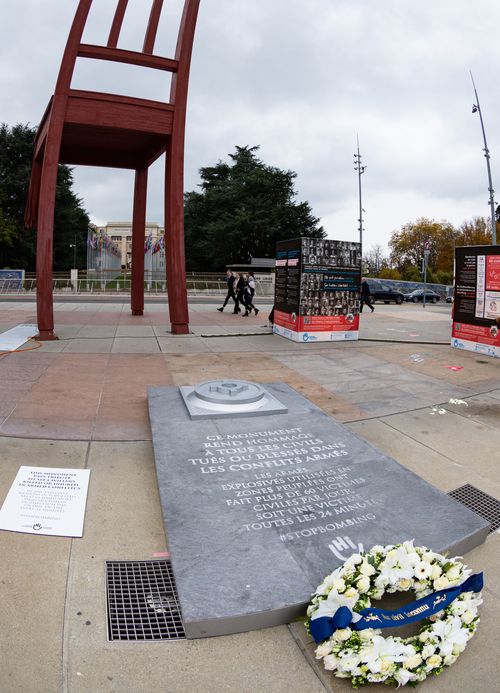 2019
2019
November 14 – Symbolic inauguration of the monument to the Unknown Civilian
As a key witness to the ravages of explosive weapons and in keeping with its foundational opposition to weapons that kill civilians, Handicap International symbolically inaugurated the Monument to the Unknown Civilian in honour of the millions of women, men and children who have unjustly died in the shadow of war.
As a key witness to the ravages of explosive weapons and in keeping with its foundational opposition to weapons that kill civilians, Handicap International symbolically inaugurated the Monument to the Unknown Civilian in honour of the millions of women, men and children who have unjustly died in the shadow of war.
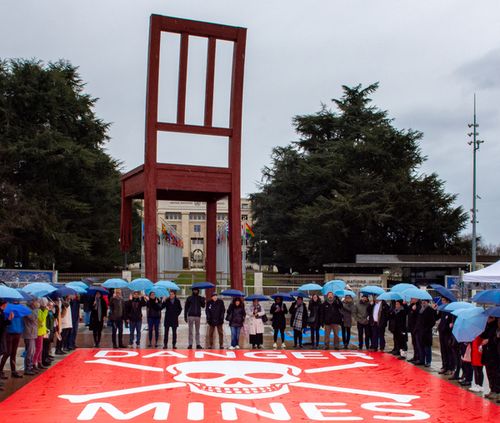 2020
2020
January 31 – A sad return to the news
Following the announcement made by U.S. government to resume the use and storage of anti-personnel mines, Handicap International...
Following the announcement made by U.S. government to resume the use and storage of anti-personnel mines, Handicap International organized an awareness campaign under Broken Chair to call on the signatory states of the Ottawa Treaty to use all their influence to get the United States to reverse this outrageous decision.
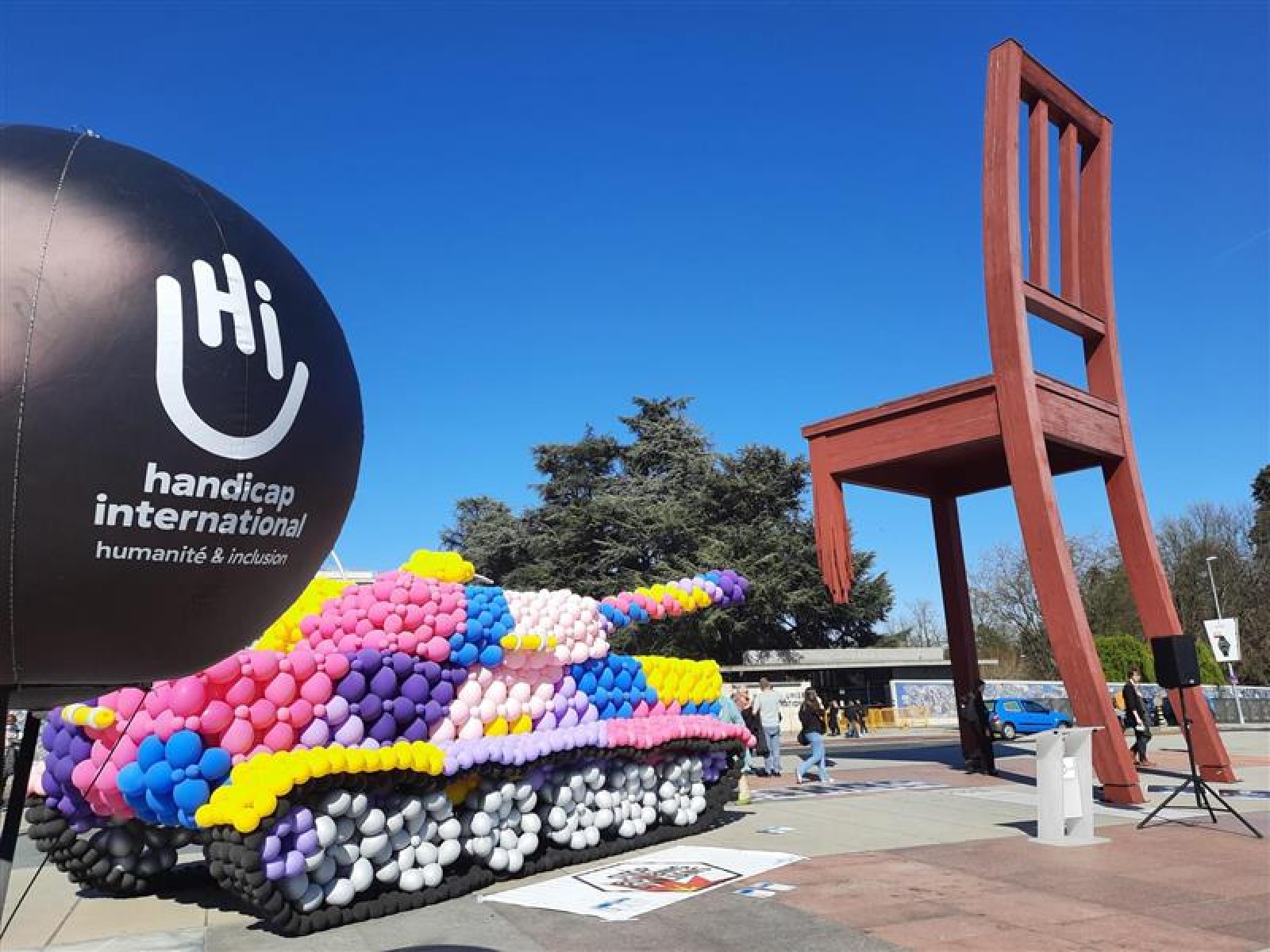 2022
2022
Real progress in ending civilian suffering due to bombing
Handicap International positioned a “balloon tank” next to Broken Chair to draw attention to the final negotiations to end the bombing of civilians in populated areas.
Handicap International positioned a “balloon tank” next to Broken Chair to draw attention to the final negotiations to end the bombing of civilians in populated areas.
The ensuing discussions led to real progress. States now recognise that the use of explosive weapons in populated areas has an unacceptable humanitarian impact on civilians and that there is an urgent need to better protect them from this practice.
Access
Adresse
Broken Chair
Place of Nations
1202 Geneva
Public transport / Nations decision
Stop : Nations
